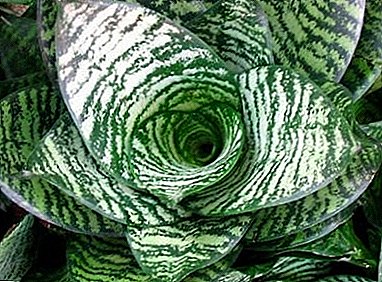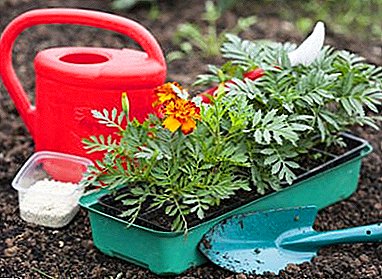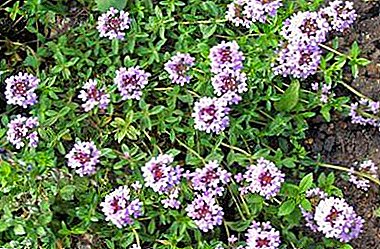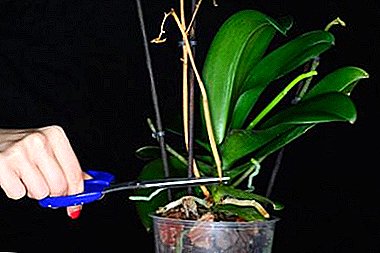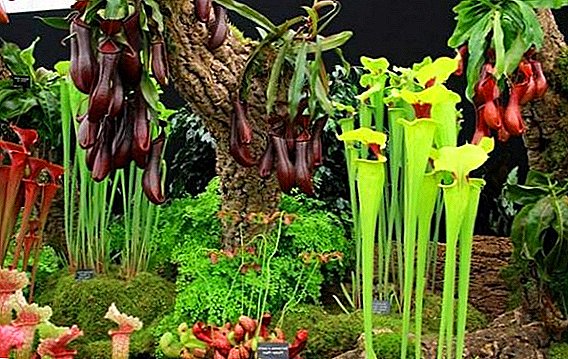 In the world of many strange plants, but the strangest, perhaps, are predatory plants. Most of them feed on arthropods and insects, but there are those who do not refuse a piece of meat. They, like animals, have a special juice that helps break up and digest the victim, receiving the necessary nutrients from it.
In the world of many strange plants, but the strangest, perhaps, are predatory plants. Most of them feed on arthropods and insects, but there are those who do not refuse a piece of meat. They, like animals, have a special juice that helps break up and digest the victim, receiving the necessary nutrients from it.
Some of these predatory plants can be grown at home. What exactly and what they represent, we will tell further.
Sarracenia (Sarracenia)
 The natural habitat of this plant is the east coast of North America, but today it is also found in Texas and in southeastern Canada. His victims sarratseniya catches leaves in the flower, having the shape of a jug with a deep funnel and a small hood over the hole. This process protects the funnel from the ingress of rainwater, which can dilute the digestive juice inside. It consists of various enzymes, including protease. Along the edge of a bright red water lily, the juice that is reminiscent of nectar is released. This plant trap and attracts insects. Sitting on its slippery edges, they are not held, fall into the funnel and are digested.
The natural habitat of this plant is the east coast of North America, but today it is also found in Texas and in southeastern Canada. His victims sarratseniya catches leaves in the flower, having the shape of a jug with a deep funnel and a small hood over the hole. This process protects the funnel from the ingress of rainwater, which can dilute the digestive juice inside. It consists of various enzymes, including protease. Along the edge of a bright red water lily, the juice that is reminiscent of nectar is released. This plant trap and attracts insects. Sitting on its slippery edges, they are not held, fall into the funnel and are digested.
Important! Today, there are more than 500 species of similar plants in different parts of the world. Most of them grow in South America, Australia, Africa. But all of them, regardless of the species, use one of the five ways of catching prey: a flower in the shape of a jug, interlocking leaves like a trap, sucking in traps, sticky traps, a crab claw in a trap.
Nepenthes
A tropical plant that feeds on insects. It grows as a liana, growing to 15 meters in length. Leaves are formed on the liana, at the ends of which one tendril grows. At the end of the antenna the flower in the shape of a jug with time is formed, which is used as a trap. By the way, in this natural cup water is collected, which monkeys drink in their natural habitat. For this, it received another name - "monkey cup".  The liquid inside the natural cup is a little sticky, it is just liquid. Insects in it simply drown, and then digested by the plant. This process takes place in the lower part of the bowl, where special glands are located to absorb and redistribute nutrients.
The liquid inside the natural cup is a little sticky, it is just liquid. Insects in it simply drown, and then digested by the plant. This process takes place in the lower part of the bowl, where special glands are located to absorb and redistribute nutrients.
Did you know? The famous naturalist Karl Linnaeus, who in the 18th century created a system for the classification of living nature, which we still use today, refused to believe that this was possible. After all, if the Venus flytrap really devours insects, it violates the order of nature, instituted by God. Linnae believed that plants caught insects by chance, and if the unfortunate little bug stops twitching, it will be released. Plants that feed on animals cause us an inexplicable alarm. Probably, the fact is that such an order of things contradicts our ideas about the universe.
This insectivorous plant has about 130 species that grow mainly in the Seychelles, Madagascar, the Philippines, as well as in Sumatra, Borneo, in India, Australia, Indonesia, Malaysia, China. Basically, plants form small jars, traps and feed only on insects. But species such as Nepenthes Rajah and Nepenthes Rafflesiana are not averse to small mammals. This flower-carnivore quite successfully digests mice, hamsters and small rats.
Predatory plant genlisea (Genlisea)
This tender, at first glance, grass grows mainly in South and Central America, as well as in Africa, Brazil and Madagascar. The leaves of many plant species, which number more than 20, emit a thick gel to attract and retain the victim. But the trap itself is in the soil, where the plant lures insects with attractive aromas.  The trap is a hollow spiral tube that emit a fermented liquid. From the inside they are covered with villi directed downward from the exit, which does not allow the victim to get out. The tubes also play the role of plant roots. From above, the plant has neat photosynthetic leaves, as well as a flower on the stem of about 20 cm. The flower, depending on the species, may have a different color, but mostly yellow shades prevail. Although the genisea belongs to insectivorous plants, it feeds mainly on microorganisms.
The trap is a hollow spiral tube that emit a fermented liquid. From the inside they are covered with villi directed downward from the exit, which does not allow the victim to get out. The tubes also play the role of plant roots. From above, the plant has neat photosynthetic leaves, as well as a flower on the stem of about 20 cm. The flower, depending on the species, may have a different color, but mostly yellow shades prevail. Although the genisea belongs to insectivorous plants, it feeds mainly on microorganisms.
Darlington California (Darlingtonia Californica)
Only one plant is related to the genus Darlingtonia - Darlingtonia Californian. You can find it in the springs and marshes of California and Oregon. Although it is believed that this rare plant prefers running water. Trap are the leaves of the plant red-orange color. They have the shape of a cobra hood, and a light green jug on top, with two sheets hanging from its end. The jug, where insects are lured by a specific aroma, is 60 cm in diameter. Villi grow inside it towards the digestive organs. Thus, the insect that got inside has only one way - deep into the plant. Return to the surface it can not. 
Bladderwort (Utricularia)
The genus of these plants, which includes 220 species, got its name for the huge number of bubbles from 0.2 mm to 1.2 cm, which are used as a trap. In the bubbles, negative pressure and a small valve that opens inwards and easily sucks insects into the middle with water, but does not release them. As food to a plant serve both tadpoles and water fleas, and the simplest unicellular organisms. The roots of the plant is not, because it lives in the water. Above the water produces a flower with a small flower. It is considered the fastest predator plant in the world. It grows on moist soil or in water everywhere, except Antarctica. 
Zhiryanka (Pinguicula)
The plant has bright green or pink leaves, covered with a sticky liquid, which lures and digests insects. The main habitat - Asia, Europe, North and South America.
Important! Today, the popularity of predatory domestic plants has increased so much that botanists keep secret the places where such plants were found. Otherwise, they are immediately ruined by poachers who are engaged in illegal prey and trade in insectivorous plants.The surface of the leaves of Zhiryanka has two types of cells. Some produce mucous and sticky secretion that appears on the surface in the form of drops. The task of other cells is the production of special enzymes for digestion: esterase, protease, amylase. Among the 73 species of plants, there are those that are active year round. And there are those who “fall asleep” for the winter, forming a dense non-carnivorous outlet. When the ambient temperature rises, the plant releases carnivorous leaves.

Rosyanka (Drosera)
One of the most beautiful domestic plants predators. In addition, it is one of the largest genus of carnivorous plants. It includes at least 194 species that can be found in almost every corner of the world, except for Antarctica.  Most species form basal rosettes, but some species produce rosettes vertical up to a meter in height. All of them are covered with glandular tentacles, at the ends of which contain droplets of sticky secretions. The insects attracted by them sit on them, stick, and the socket starts to roll up, closing the victims in a trap. The glands located on the leaf surface secrete digestive juice and absorb nutrients.
Most species form basal rosettes, but some species produce rosettes vertical up to a meter in height. All of them are covered with glandular tentacles, at the ends of which contain droplets of sticky secretions. The insects attracted by them sit on them, stick, and the socket starts to roll up, closing the victims in a trap. The glands located on the leaf surface secrete digestive juice and absorb nutrients.
Biblis (Byblis)
Biblis, despite its carnivorousness, is also called the rainbow plant. Originally from Northern and Western Australia, it is also found in New Guinea on wet, wetlands. It grows a small shrub, but sometimes can reach 70 cm in height. Gives beautiful flowers of purple shades, but there are also pure white petals. Inside the inflorescence there are five curved stamens. But the trap for insects are leaves with a round cross-section, dotted with glandular hairs. Like the sundews, at the ends they have a slimy, sticky substance to lure the victims. Similarly, there are two types of glands on the leaflets: which secrete bait and which digest food. But, unlike sundews, biblis does not secrete enzymes for this process. Botanists are still engaged in controversy and research on plant digestion. 
Aldrandanda vesicular (Aldrovanda vesiculosa)
When amateur flower growers are interested in the name of a flower that eats insects, they rarely learn about bubbly aldorande. The fact is that the plant lives in water, does not have roots, and therefore is little used in domestic breeding. It feeds mainly on crustaceans and small water larvae.  As traps, it uses filamentous leaves up to 3 mm in length, which grow by 5-9 pieces around the circumference of the stem along its entire length. On the leaves grow wedge-shaped petioles, filled with air, which allows the plant to stay close to the surface. At their ends are located cilia and a double plate in the form of a shell, covered with sensitive hairs. As soon as they get annoyed with the victim, the leaf closes along, grabbing it and digesting it.
As traps, it uses filamentous leaves up to 3 mm in length, which grow by 5-9 pieces around the circumference of the stem along its entire length. On the leaves grow wedge-shaped petioles, filled with air, which allows the plant to stay close to the surface. At their ends are located cilia and a double plate in the form of a shell, covered with sensitive hairs. As soon as they get annoyed with the victim, the leaf closes along, grabbing it and digesting it.
The stems themselves reach a length of 11 cm. Aldrewda is growing rapidly, adding up to 9 mm per day in height, forming a new curl every day. However, as it grows at one end, the plant dies at the other. The plant produces single small white flowers.
Venus Flytrap (Dionaea Muscipula)
This is the most famous plant predator, which is widely cultivated at home. It feeds on arachnids, flies and other small insects. The plant is also small, from a short stem after flowering the plant will grow by 4-7 leaves. Blossoms in small white flowers, collected in a brush. 
Did you know? Darwin conducted many experiments with plants that feed on insects. He fed them not only insects, but also egg yolk, pieces of meat. As a result, he determined that the predator is activated, having received food, by weight equal to human hair. The most surprising for him was the Venus flytrap. It has a high rate of closing the trap, which at the time of digestion of the victim literally turns into a stomach. To reopen the plant takes at least a week.The long leaf at the end is divided into two flat rounded lobes, which form a trap. Inside, the lobes are colored red, but the leaves themselves, depending on the variety, may have a different color, not just green. Along the edges of the trap, bristly processes grow and mucus is attractive for insects. Inside the trap grow sensitive hairs. As soon as they are irritated by the victim, the trap instantly slams. The lobes begin to grow and thicken, flattening the prey. At the same time, juice is excreted for digestion. After 10 days only the chitinous shell remains from it. Over the entire period of its life, each leaf on average digests three insects.
Predator plants are today a very popular type of home plants. True, mostly novice florists are known only for the Venus flytrap. In fact, at home, you can grow other interesting exotic and predatory plants. Some of them grow exclusively in water, but most will need a pot and poor soil. It is the nutrient poor soil and created in nature such amazing plants that feed on insects and even small mammals.



